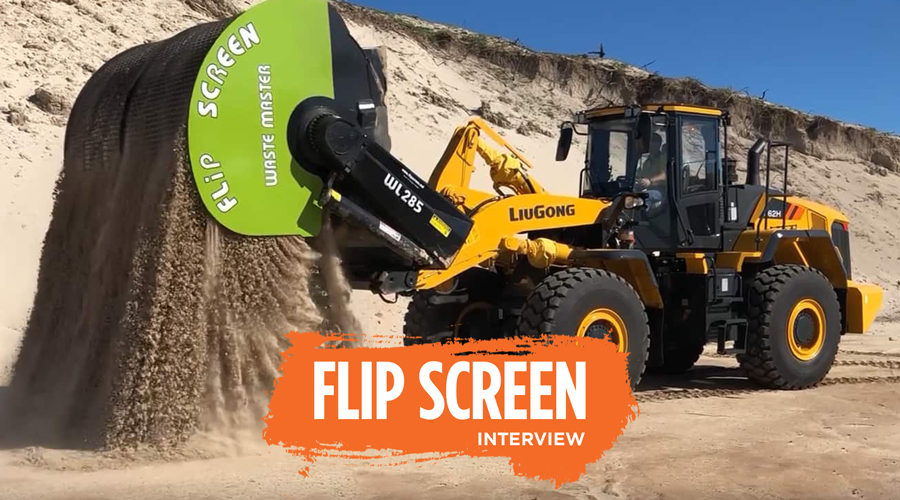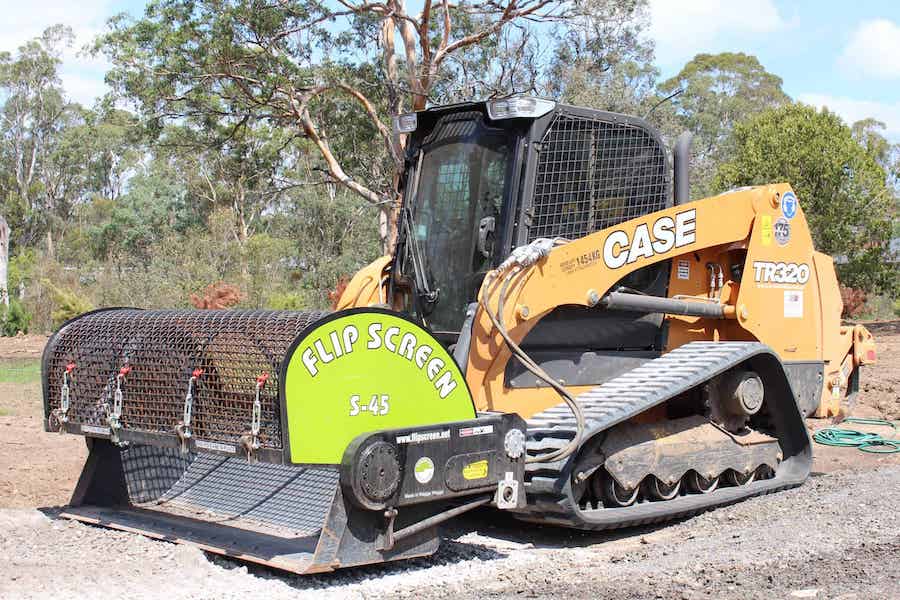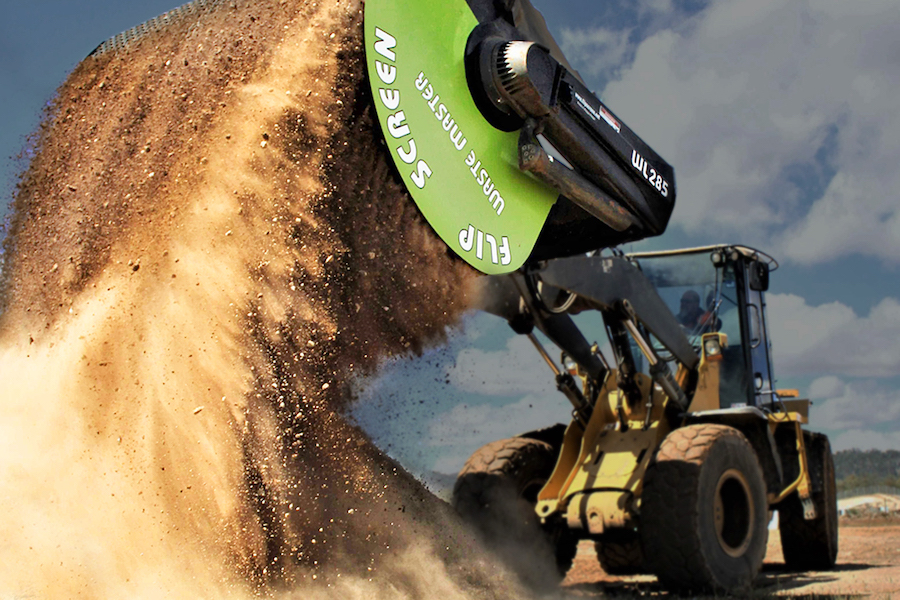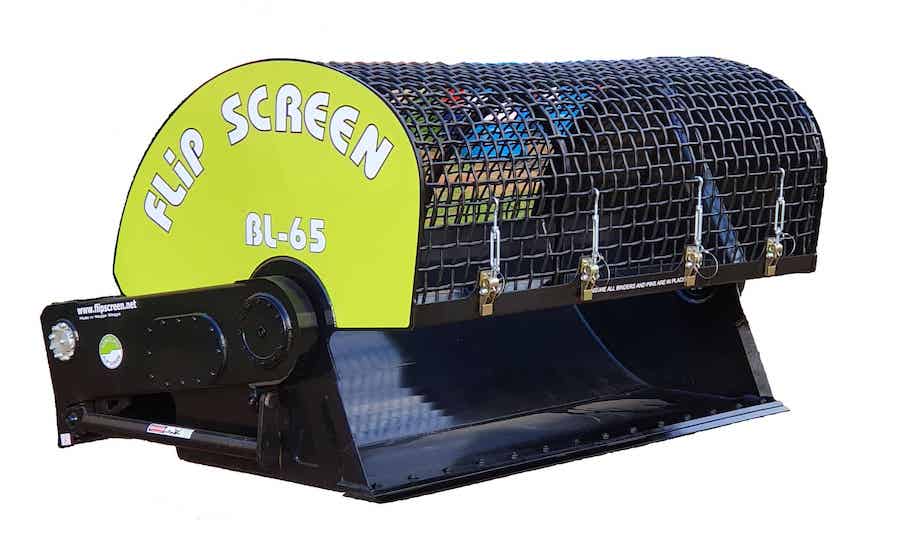
E&C’s interview with Flip Screen, seller of a patented high-volume attachment that inexpensively and efficiently screens any material on-site – with models to fit carriers of any size.
E&C: What is a screening bucket?
FS: Screening buckets use blades of various configurations that enable you to scoop many different types of material for filtering – or screening.
E&C: What types of material can be screened?
FS: Screening buckets can handle many different types of material, including construction waste, topsoil, and scrap metal. Used along with crushing buckets they can increase crushing productivity. The salvaged material can be used on the job site or collected for further processing – providing another revenue stream.
FS: Obviously, our buckets have many uses on a construction site. But they are also used for coal cleaning, waste handling, and demolition. You’ll see our Flip Screens used in mining and landfill sites. With the right bucket screening model, you can handle corrosive material like fertilizer.
E&C: In a nutshell, “If you can scoop it, you can screen it.”
FS: Yup, that’s our motto. Key advantages for construction sites include using a Flip Screen bucket to organize material on a job site without having to buy a separate machine. They can also provide needed material like backfill.
E&C: How do you select the right Flip Screen model?
FS: Select your screening bucket based on the size and type of material you’ll be screening, the machine you’ll be attaching it to, and the job environment.

E&C: How do you choose the right mesh aperture?
FS: Mesh aperture is based on the largest size that you want to filter out of the material you’re scooping up. For example, the standard mesh range for Flip Screen screening buckets is between 6 mm and 300mm (1/4″ to 12″). However, we can design custom meshes for your application.
E&C: What about the cutting edge?
FS: You need to select the right cutting edge for the material you are scooping up. Several of the Flip Screen models come with a reversible, bolt-on cutting edge. This allows you to fit new cutting edges in the field without cutting out the old one and welding in the new one.
E&C: What about maintenance?
FS: Our screening buckets require less maintenance compared to other brands because they have less parts. A screening bucket with more moving parts can result in fouling, jamming, and tangling. The Flip Screen is empty; it relies on the external shape to carry out its functions. Flip Screen buckets are less likely to breakdown in the field.

E&C: Are Flip Screen buckets easier to use?
FS: They sure are. You want a screening bucket that does not require a high level of expertise to operate. For example, any Flip Screen screening bucket mesh can be changed in about 5 minutes.
E&C: How do you change the mesh?
FS: The operator unlatches the load binders on the mesh, re-enters the machine, activates the hydraulics, and releases the old mesh. The new mesh is loaded on simply by lifting it up. The operator then secures it in place.
E&C: We understand that the “plug and play” smart valve also makes Flip Screens easier to use compared to other brands.
FS: Absolutely. That “plug and play” smart valve allows any operator to readily switch between carriers without requiring a high-level understanding of hydraulics. It does not need changes to the hydraulics on the carrier machine. The smart valve ensures the correct speed and torque and ramps down smoothly to zero.
FS: There’s a lot more uses for a Flip Screen bucket. For example, you can replace the mesh with a mixing plate to mix concrete. Flip Screen’s inward spiraling action converts your carrier into a concrete mixer.
E&C: We saw a video where you use a Flip Screen as a mobile wash plant.
FS: Pretty cool, right? All Flip Screen models use durable, high-grade seals. This allows you to screen underwater – changing it from a screener into a mobile wash plant.
E&C: We’ve heard that some Flip Screens can screen out engine blocks and ship anchors.
FS: Engine blocks, ship anchors, even crusher plates. Flip Screen screening buckets are built to handle the harshest environments. Flip Screens have replaced hundreds of portable screening plants worldwide in the scrap industry.
FS: Flip Screen S10 is our smallest screening bucket. Its compact size is perfect for tight spaces. It has a scoop size of .39 square yards and weighs just 765 pounds. To give you an idea of how easy Flip Screens are to use, we have a video of an operator trying the S10 with a Kanga for the first time, screening bricks and debris from sand.
E&C: What can you do with the Flip Screen WL130?
FS: The Flip Screen WL130 can pick up more than 4 times the amount of material as compared to the S30 model. It weighs more than 2 tons and has mesh aperture from ¼ inch to 12 inches. We have a video that shows the WL130 Flip Screen screening bucket on a JCB loader screening a pile of rock and dirt.

E&C: What about big jobs?
FS: The EX85 is fitted to wheel loaders from 38,000 to 55,000 pounds (17.5 to 25 metric tonnes). We have a video showing the Flip Screen EX85 screening bucket being used to screen scrap metal. Note that the operator can screen the scrap and move it directly to the bin with no spillage on the way.
E&C: What else should our readers know about Flip Screen?
FS: Flip Screen has many different screening bucket models to handle a wide variety of jobs. However, if you don’t see exactly what you need, we can customize a screening bucket for you. Download Flip Screen’s full product catalogue to see all our screening buckets.









































